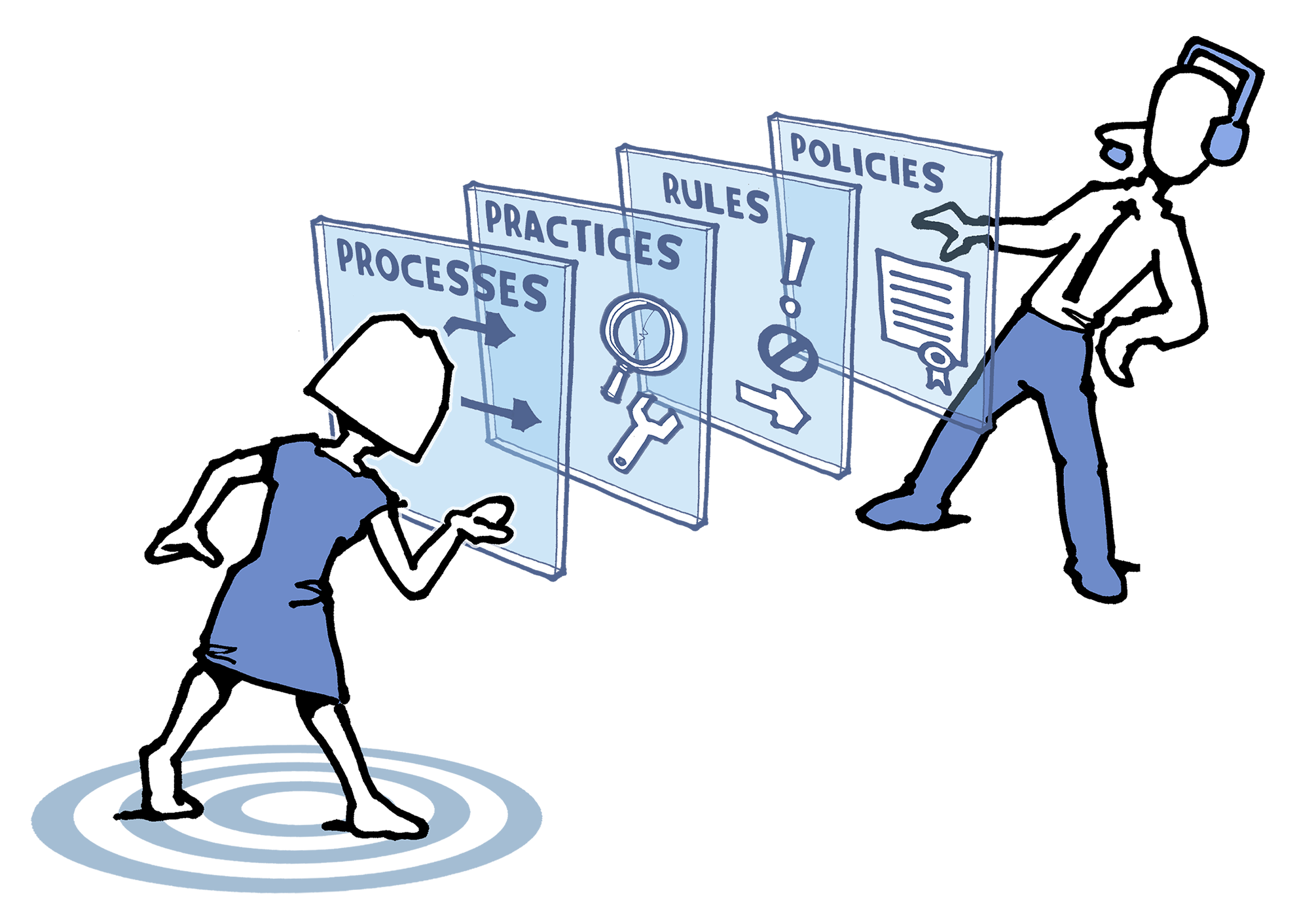
It is common to hear leaders in the private sector, public sector, and voluntary organisations espouse ‘Our customers are at the centre of what we do’, or similar sentiment. Behind these words, the leader’s intent is to build a better organisation by making services easier and better for customers. The strategy is one of transforming the organisation to become customer-centric.
Customer experience statements can be great rallying calls. However, progressive leaders recognise the problem to solve becomes: How do you ensure such slogans live and breathe within the organisation and avoid becoming just words on a corporate screensaver?
Conventionally, leaders think that if their colleagues follow the ‘be customer-centric’ instruction, the organisational ethos and values will change and customers will reap the benefits. This is what we refer to as the ‘wave a magic wand’ style of leadership! The reality, despite the prevailing rhetoric, is that customers see little evidence of their services improving, and colleagues continue to work within stultifying organisational systems and structures that prevent them from serving customers productively. Consequently, leaders become disillusioned by the various promises made by traditional change approaches, fads, and magic cures to achieve their customer-centric strategy. The result: frustration, loss of customers, and poor business outcomes.
THE HIDDEN COSTS OF CONVENTIONAL SERVICE DELIVERY
Service organisations are typically divided into separate organisational departments, or channels, delivering particular services or functions. Each has a different leader, who, in turn, has their specific targets, objectives, and budgets to meet. The assumption is that if each leader does their bit well, the whole service will improve for customers. It is a flawed assumption. In reality, people operate within individual departments or channels – there is no ‘work together or collaboratively’ reflected in the organisational structure. The result: poor service delivery to customers, which, in turn, leads to higher costs to the organisation.

Conventional service delivery is not designed based on how the customer wants to obtain value. The relationship norm between a customer and their service provider is usually transactional. The customer is forced to transact in a standard way, through multiple front doors, often funnelled to a channel that is assumed, by the organisation, to be cheaper to deliver.
What is invisible to leaders is that these conventional designs cause poor customer and employee experience and unnecessary operational expense. The hidden cause is restrictive red tape – policies, systems, processes, and rules that have been adopted, reviewed, and adapted over time. What results is an obstructive and clumsy design that wastes time and energy and frustrates customers and employees alike. Such designs invite customers and employees to cut corners, working around the red tape, so they can get things done.
A CUSTOMER’S PERSPECTIVE
In service organisations, there commonly exists a problem in perspective by those designing and delivering the service. People in organisations are normally inward thinking; in other words, ‘What do I/we need?’ They are socialised to look at work from a functional and internal perspective, viewing the organisation from the inside out. When not considering a service from a customer perspective, performance can look really good when, in fact, the opposite is often true.
When using a service, customers do not think of separate organisational departments or channels. Neither do they value internal organisational objectives, targets, and budgets. Customers think of their service organisation holistically, from the outside in. All they want are their circumstances, needs, and issues to be understood and their specific request resolved easily and quickly. In other words, they want to derive value from their interactions and time spent dealing with the organisation.
The starting point for giving every customer exceptional service at less cost is taking a customer perspective: looking at work outside in, as a set of interconnected parts that connects the customer to what they want. In other words, considering an organisation as a customer would look at it and experiencing services as a customer would experience them. What that means is the path to fundamental improvement requires ignoring all internal functional boundaries. It also means ignoring external boundaries. It is the customer who is the arbiter of what constitutes the service boundaries and what is of value. A simple example is when a customer would like to take out a home loan. They may go to a mortgage broker who, in turn, liaises with a bank. From a customer’s point of view, both the mortgage broker and the bank collectively provide the home loan service.
When leaders choose to look at their service organisation from a customer’s perspective, they discover a unique source of improvement for creating a productive and positively viewed organisation that is better for customers, better for the organisation, and better for colleagues.
RECONCEIVING SERVICE DELIVERY REDUCES COSTS AND INCREASES CAPACITY
We believe in the principle that all customers deserve the same high-quality service. Working alongside people in the organisation, we use a process of experimentation that utilises new knowledge to inform improvements to be made. As a result, services are designed in a way to simultaneously provide exceptional service and, counterintuitively, reduce costs.
Once the service’s purpose is delivered upon the first customer contact, failure demand and swathes of unproductive activity disappear and operational capacity increases. There are significant reductions in unwanted demand coming into the contact centre and other channels. Complaints and negative posts on social media are replaced by compliments and positive swings in advocacy. Customers switch to using digital services to search and fulfil rather than progress chase (‘Where is my…?’). Churn falls dramatically, because when customers receive better value from their services, it engenders brand loyalty. Staff engagement scores improve as morale rockets. Improved financial results follow: operational expense falls and, in sales organisations, revenue increases.
To illustrate, a large Australian organisation was renowned for being difficult and painful to deal with. The organisation itself understood this and had established a specialist group to change and improve service. For several years, the organisation tried various change approaches, each of which failed to create any significant improvement. This was when we received a call. The leaders wanted to test our approach to determine whether it could be used to transform their fundamentally poor and negative customer experience reputation.
Once the predictable customer circumstances, needs, and issues were truly understood, the real nature of what customers wanted was indisputable. This knowledge enabled leaders to see important and counterintuitive phenomena for the first time, and revealed how conventional measures had kept this business-critical information hidden. They truly understood the problems created by the current organisational systems and structure and finally had a cohesive view of what needed to be challenged to improve. As a result, they agreed to see if a better service experience could be created to enable customers to more easily get value from their services. The outcomes of reconceiving and redesigning the service? After just a few months:
- The previous Net Promoter Score leapt by over a 100-point positive increase;
- Failure demand generated by the organisation reduced from an astonishing 54 per cent to 5 per cent;
- Staff absenteeism declined, from 12 per cent to 4 per cent; and
- Happier customers became loyal to the organisation and consequently purchased more products and services
Providing exceptional services by understanding what matters to customers, and enabling colleagues to work productively to service customers, will unlock similar profound improvements for you and your organisation.

This article contains excerpts from Chapter 10 of our latest book Reconceive: New thinking for progressive leaders to create productive, positively viewed service organisations
SUBSCRIBE FOR LATEST ARTICLES
If you’d like to read our latest articles then we can send them to you each time they are published. Please subscribe below.
